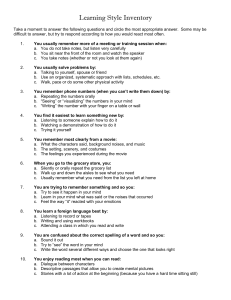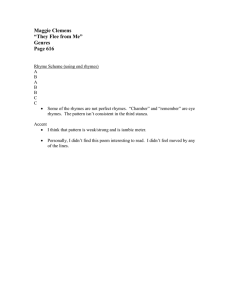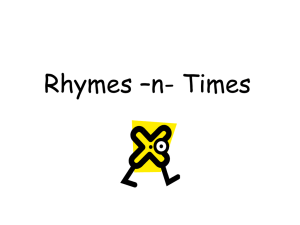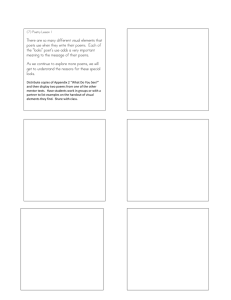Name: ________________________ Date: _____________________ Self-Assessment of Learning Strengths Period: ____________________
advertisement
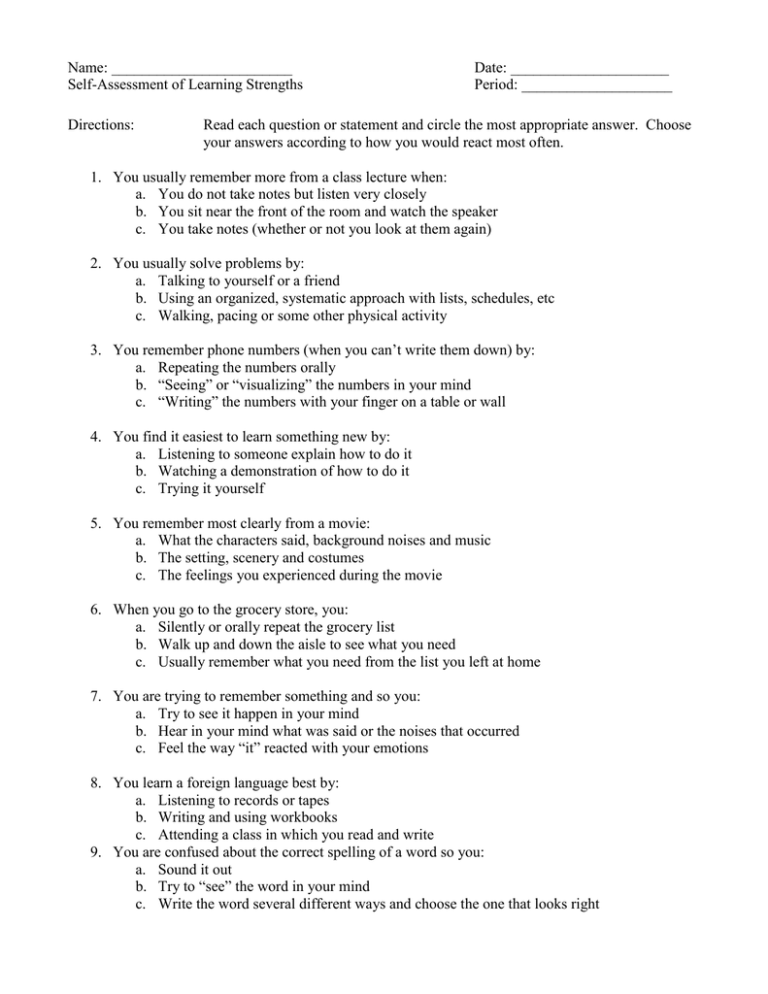
Name: ________________________ Self-Assessment of Learning Strengths Directions: Date: _____________________ Period: ____________________ Read each question or statement and circle the most appropriate answer. Choose your answers according to how you would react most often. 1. You usually remember more from a class lecture when: a. You do not take notes but listen very closely b. You sit near the front of the room and watch the speaker c. You take notes (whether or not you look at them again) 2. You usually solve problems by: a. Talking to yourself or a friend b. Using an organized, systematic approach with lists, schedules, etc c. Walking, pacing or some other physical activity 3. You remember phone numbers (when you can’t write them down) by: a. Repeating the numbers orally b. “Seeing” or “visualizing” the numbers in your mind c. “Writing” the numbers with your finger on a table or wall 4. You find it easiest to learn something new by: a. Listening to someone explain how to do it b. Watching a demonstration of how to do it c. Trying it yourself 5. You remember most clearly from a movie: a. What the characters said, background noises and music b. The setting, scenery and costumes c. The feelings you experienced during the movie 6. When you go to the grocery store, you: a. Silently or orally repeat the grocery list b. Walk up and down the aisle to see what you need c. Usually remember what you need from the list you left at home 7. You are trying to remember something and so you: a. Try to see it happen in your mind b. Hear in your mind what was said or the noises that occurred c. Feel the way “it” reacted with your emotions 8. You learn a foreign language best by: a. Listening to records or tapes b. Writing and using workbooks c. Attending a class in which you read and write 9. You are confused about the correct spelling of a word so you: a. Sound it out b. Try to “see” the word in your mind c. Write the word several different ways and choose the one that looks right 10. You enjoy reading most when you can read: a. Dialogue between characters b. Descriptive passages that allow you to create mental pictures c. Stories with a lot of action in the beginning (because you have a hard time sitting still) 11. You usually remember people you have met by their: a. Names (you forget faces) b. Faces (you forget names) c. Mannerisms, motions, etc 12. You are distracted the most by: a. Noises b. People c. Environment (temperature, comfort of furniture, etc. 13. You usually dress: a. Fairly well (but clothes are not very important to you) b. Neatly (in a particular style) c. Comfortably (so you can move easily) 14. When you can’t do something physical and you can’t read at the moment, you choose to: a. Talk with a friend b. Watch TV or look out the window c. Fidget in your chair or bed Scoring 1. Count the total number of responses for each letter and write them below: a. _______ Auditory (learn best by hearing) b. _______ Visual (learn best by seeing) c. _______ Kinesthetic (learn best by touching, doing, moving) 2. Notice if one learning strength is significantly higher or lower than another, or if any two are close in number. 3. Were the results as you expected them to be? Is that the way you see yourself? Suggested Aids for Learning Strengths – KEEP FOR YOUR RECORDS Use these aids to sharpen your particular dominant learning strength or to strengthen one that challenges you. Try to be aware of the different activities you do daily to help all three of your learning strengths. Visual Use guided imagery Auditory Use tapes Kinesthetic Pace/walk as you study Form pictures in your mind Watch TV Physically “do it” Take notes Listen to music Practice by repeated motion See parts of the words Speak/listen to speakers Breathe slowly Use cue words Make up rhymes/poems Role play Use notebooks Read aloud Exercise Use study cards Talk to yourself Dance Use photographic pictures Repeat things orally Write Watch TV Use rhythmic sounds Write on surfaces with Watch filmstrips Have discussions finger Watch movies Listen carefully Take notes Use charts, graphs Use oral directions Associate feelings with Use maps Sound out words concept/information Demonstrate Use theater Write lists repeatedly Draw/use drawings Say words in syllables Stretch/move in chair Use exhibits Use word links, rhymes, Watch lips move in front of Watch lips move in from of poems, lyrics mirror a mirror Use word links, rhymes, Use visuals- acronyms, poems, lyrics visual chains, mind maps
